Description
Indgo Solar 135W panel offers the latest technology solar panels which most of the 12 Volt solar panels in the current market are usually available with up to 5 bus bars but there Indgo Solar offer 10 bus bar mono perc half cut cells in solar modules which are completely modern technology today. There, the space between cells is reduced and specifically we use Mono Perc half cut cells in place of full cells in all our solar modules to increase overall efficiency. Indgo Solar 125 Watt Mono Perc Crystalline super durable high-efficiency solar panel ideal for powering off-grid appliances. It is the perfect solar panel for small home appliances like traffic signal lights, street lights, air purifiers, FM radios, audio speakers, etc.Half-Cut Cells Technology of Indgo Solar 135W Panel
Indgo Solar 135W Panel uses half-cut cell technology to increase performance efficiency because half-cut solar cells are more resistant to shading effects than traditional solar cells. Compared with standard modules, the current is reduced by half, the resistance loss is reduced, so the heat is reduced. By cutting the solar cells in half, the current produced by each cell is halved, and less current flow results in less resistive loss as electricity flows across the cells and wires in the solar panel. In this way the electrical losses of the panel can be reduced.Latest Technology of Indgo Solar 135W Panel
Indgo Solar is a manufacturer of solar panels that comes with 10 Bus Bar 182 mm Mono PERC Half Cut Cells for the first time in 12volt solar panel design in India, which is completely futuristic and more service efficient as compared to other providers. Indgo Solar 135 Watt Panels are made of A grade Mono PERC crystalline black silicon cells, which are best for generating electricity from sunlight and our solar module cells are made of high quality silicon giving high efficiency up to 23% and performs well even in low light, which is usually Not seen anywhere else.
Indgo Solar 135W panel offers the latest technology solar panels which most of the 12 Volt solar panels in the current market are usually available with up to 5 bus bars but there Indgo Solar offer 10 bus bar mono perc half cut cells in solar modules which are completely modern technology today. There, the space between cells is reduced and specifically we use Mono Perc half cut cells in place of full cells in all our solar modules to increase overall efficiency. Indgo Solar 125 Watt Mono Perc Crystalline super durable high-efficiency solar panel ideal for powering off-grid appliances. It is the perfect solar panel for small home appliances like traffic signal lights, street lights, air purifiers, FM radios, audio speakers, etc.
Half-Cut Cells Technology of Indgo Solar 135W Panel
Indgo Solar 135W Panel uses half-cut cell technology to increase performance efficiency because half-cut solar cells are more resistant to shading effects than traditional solar cells. Compared with standard modules, the current is reduced by half, the resistance loss is reduced, so the heat is reduced. By cutting the solar cells in half, the current produced by each cell is halved, and less current flow results in less resistive loss as electricity flows across the cells and wires in the solar panel. In this way the electrical losses of the panel can be reduced.
Latest Technology of Indgo Solar 135W Panel
Indgo Solar is a manufacturer of solar panels that comes with 10 Bus Bar 182 mm Mono PERC Half Cut Cells for the first time in 12volt solar panel design in India, which is completely futuristic and more service efficient as compared to other providers. Indgo Solar 135 Watt Panels are made of A grade Mono PERC crystalline black silicon cells, which are best for generating electricity from sunlight and our solar module cells are made of high quality silicon giving high efficiency up to 23% and performs well even in low light, which is usually Not seen anywhere else.
Best in class on solar module of Indgo Solar 135W Panel
Indgo Solar 135W 10BB Mono PERC solar module available in the market with high efficiency, strongest durability and attractive return on investment almost maintenance free making it the best among all solar panels in its segment. It is the latest solar panel in Mono PERC Crystalline technology with 10 bus bars and 36 mono half cut cells and comes with a 25 years linear performance warranty. One cell of which is capable of producing electricity up to 0.677volts.
Convenience and installation of Indgo Solar 135W Panel
Indgo Solar use an IP68 rated junction box with MC4 connectors on our solar modules which is completely weatherproof. Also we added 500mm DC cable for positive and negative terminals which are built-in connected to the complete solar module setup. The best thing of our solar module is we use aluminum frame on the outside of the solar panel, that is coated with a black anodized coating that helps it resist rust and has pre-drilled holes for mounting it
Increase The Cell Receiving Surface
The 10BB PV Solar Panel can lower the present intensity between every cell thanks to the reduced busbar area, enhancing the PV Solar Panel’s potency.
As the busbars on the 10BB solar panel are thinner than those on the 5BB solar panel, their coverage on the cells is smaller, permitting more sunlight to reach the cell. As a result, the Indgo Solar 10BB panel includes a greater power production efficiency with the constant size.

Best in class on solar module of Indgo Solar 125W Panel
Indgo Solar 125W 10BB Mono PERC solar module available in the market with high efficiency, strongest durability and attractive return on investment almost maintenance free making it the best among all solar panels in its segment. It is the latest solar panel in Mono PERC Crystalline technology with 10 bus bars and 36 mono half cut cells and comes with a 25 years linear performance warranty. One cell of which is capable of producing electricity up to 0.677volts.
Convenience and installation of Indgo Solar 125W Panel
Indgo Solar use an IP68 rated junction box with MC4 connectors on our solar modules which is completely weatherproof. Also we added 500mm DC cable for positive and negative terminals which are built-in connected to the complete solar module setup. The best thing of our solar module is we use aluminum frame on the outside of the solar panel, that is coated with a black anodized coating that helps it resist rust and has pre-drilled holes for mounting it.
Increase The Cell Receiving Surface
The 10BB PV Mono Solar Panel can lower the present intensity between every cell thanks to the reduced busbar area, enhancing the PV Solar Panel’s potency.
As the busbars on the 10BB mono solar panel are thinner than those on the 5BB solar panel, their coverage on the cells is smaller, permitting more sunlight to reach the cell. As a result, the Indgo Solar 10BB panel includes a greater power production efficiency with the constant size.
Monocrystalline Solar Panel
Mono PERC (Passivated Emitter Rear Cell) solar panels are a type of photovoltaic (PV) module used to capture and convert sunlight into electricity. They are a more advanced version of traditional monocrystalline solar panels, which are known for their high efficiency and sleek appearance. Here’s some key information about mono PERC solar panels.
Mono PERC panels are built using monocrystalline silicon solar cells. Monocrystalline cells are made from a single crystal structure, which makes them more efficient at converting sunlight into electricity compared to polycrystalline cells.
The “PERC” technology in mono PERC panels stands for Passivated Emitter Rear Cell. It refers to a design enhancement that involves adding a passivation layer on the rear surface of the solar cell. This passivation layer helps to reduce recombination of charge carriers, thereby increasing the overall efficiency of the panel.
Mono PERC panels are known for their high efficiency, typically ranging from 18% to 24%. This means they can convert a larger portion of the sunlight they receive into electricity, which is especially beneficial in limited space installations.
Mono PERC panels tend to perform better in low-light conditions compared to traditional monocrystalline panels. This makes them a good choice for areas with frequent cloudy or overcast weather.
These panels are often considered aesthetically pleasing due to their uniform black appearance. This can be important for residential installations where the visual appeal of the solar array matters.
While mono PERC panels are more efficient and attractive than some other solar panel types, they tend to be more expensive. However, the higher efficiency can offset the initial cost by providing more electricity over the long term.
Mono PERC panels come in various sizes, typically ranging from 25W to 550W or more, depending on the manufacturer.
When considering solar panels for your specific project, it’s essential to assess your energy needs, available space, budget, and aesthetic preferences. Mono PERC panels are a good option if you want a high-efficiency and visually appealing solar solution, but it’s also worth comparing them to other panel types and brands to find the best fit for your needs.
High-efficiency solar panels are designed to capture and convert more sunlight into electricity compared to standard or lower-efficiency solar panels. The efficiency of a solar panel refers to the percentage of sunlight it can convert into electricity. High-efficiency panels typically have efficiency ratings of 20% or higher, while standard panels may have efficiencies in the range of 15-18%.
Monocrystalline and Monocrystalline PERC :
Monocrystalline solar panels, particularly those with Passivated Emitter Rear Cell (PERC) technology, are known for their high efficiency. These panels are made from single-crystal silicon and often have efficiency ratings in the range of 20% to 24%.
N-Type Solar Cells :
Some high-efficiency panels use n-type silicon instead of the more common p-type silicon. N-type cells are more resistant to light-induced degradation and can have higher efficiency ratings.
When choosing high-efficiency solar panels, you’ll want to consider your specific needs, budget, and available space. These panels are more expensive than standard ones, but they can generate more electricity from the same amount of space, making them a good choice for residential and commercial installations where space is limited or aesthetics are important. Additionally, high-efficiency panels can provide a faster return on investment due to their increased energy production.
Indgo Solar Monocrystalline panels have several advantages when it comes to solar energy generation. These advantages include:
High Efficiency: Monocrystalline solar panels are known for their high efficiency in converting sunlight into electricity. They typically have the highest efficiency rates among all types of solar panels, which means they can generate more electricity for a given area.
Space-Efficient :
Because of their high efficiency, monocrystalline panels require less space to generate the same amount of electricity as other types of panels. This is especially beneficial if you have limited roof space or a small installation area.
Longevity :
Monocrystalline solar panels have a long lifespan and can last for 25 years or more with proper maintenance. Many manufacturers offer warranties that guarantee the performance of these panels for a certain number of years.
Durability :
Monocrystalline panels are built to withstand harsh weather conditions, making them a good choice for regions with extreme temperatures or severe weather. They are often more resistant to heat, humidity, and corrosion.
Aesthetics :
Monocrystalline solar panels tend to have a sleek and uniform black appearance, which some homeowners find more visually appealing compared to other panel types.
Better Performance in Low-Light Conditions :
Monocrystalline panels perform better in low-light and overcast conditions compared to other types of panels, making them more reliable for energy generation in less than ideal weather.
Lower Degradation Rates :
Monocrystalline panels typically have lower degradation rates over time, which means they maintain their performance levels more effectively as they age.
Environmental Impact :
Monocrystalline solar panels have a lower environmental impact in terms of energy payback time and carbon footprint compared to some other types of solar panels.
It’s worth noting that Indgo Solar monocrystalline panels tend to be more expensive than some other types, such as polycrystalline or thin-film panels. However, their higher efficiency and longer lifespan can often make them a cost-effective choice over the long term, especially in applications where space and efficiency are critical factors.
Monocrystalline solar panels are a popular choice for harnessing solar energy due to several benefits they offer. Here are some of the key advantages of monocrystalline solar panels:
Higher Efficiency :
Monocrystalline solar panels are known for their high energy conversion efficiency, typically ranging from 15% to 22%. This means they can convert a greater percentage of sunlight into electricity, making them more efficient than other types of solar panels.
Compact Design :
Monocrystalline panels are more space-efficient. They can generate a significant amount of power within a smaller footprint, which is beneficial for residential and commercial installations with limited space.
Durability :
Monocrystalline panels are durable and have a long lifespan, often lasting 25 years or more. They are less prone to degradation over time, making them a reliable choice for long-term solar energy production.
Improved Performance in Low Light Conditions :
Monocrystalline panels perform better in low-light conditions compared to other panel types. They can generate electricity even on cloudy or overcast days, which increases their overall energy production.
Aesthetics :
Monocrystalline panels typically have a uniform, black appearance, which is considered more aesthetically pleasing by some homeowners. This can be important for residential installations where appearance matters.
Higher Temperature Tolerance :
Monocrystalline panels tend to perform better in high-temperature environments compared to other panel types. This means they are less likely to suffer from efficiency losses when exposed to heat.
Longer Warranties :
Many monocrystalline solar panel manufacturers offer longer warranties, often extending to 25 years or more, which provides peace of mind and financial security for the solar panel owner.
Eco-Friendly :
Monocrystalline panels have a lower environmental impact when compared to fossil fuels, as they produce clean and renewable energy without emitting greenhouse gases or other pollutants.
Potential for Higher Resale Value :
Homes with monocrystalline solar panels may have higher resale values because they come with an established source of clean energy, which can be attractive to potential buyers.
It’s important to note that while monocrystalline solar panels have numerous advantages, they tend to be more expensive compared to other types like polycrystalline or thin-film panels. However, their higher efficiency and longer lifespan can often make them a cost-effective choice in the long run, especially for applications where space is limited or aesthetics are important.
Electrical Properties
| Maximum Power (Pmax) | 135 W |
| Maximum Power Voltage (Vmp) | 19.50 V |
| Maximum Power Current (Imp) | 6.45 A |
| Open Circuit Voltage (Voc) | 23.50 V |
| Short Circuit Current (Isc) | 6.75 A |
| Module Efficiency(%) | 18.90 |
| Maximum System Voltage | 1000 V |
| Maximum Series Fuse Rating | 15 A |
| Cell Efficiency(%) | 22.80 |
| Application Class | A Grade |
Monocrystalline Solar Panel
Mono PERC (Passivated Emitter Rear Cell) solar panels are a type of photovoltaic (PV) module used to capture and convert sunlight into electricity. They are a more advanced version of traditional monocrystalline solar panels, which are known for their high efficiency and sleek appearance. Here’s some key information about mono PERC solar panels. Mono PERC panels are built using monocrystalline silicon solar cells. Monocrystalline cells are made from a single crystal structure, which makes them more efficient at converting sunlight into electricity compared to polycrystalline cells. The “PERC” technology in mono PERC panels stands for Passivated Emitter Rear Cell. It refers to a design enhancement that involves adding a passivation layer on the rear surface of the solar cell. This passivation layer helps to reduce recombination of charge carriers, thereby increasing the overall efficiency of the panel. Mono PERC panels are known for their high efficiency, typically ranging from 18% to 24%. This means they can convert a larger portion of the sunlight they receive into electricity, which is especially beneficial in limited space installations. Mono PERC panels tend to perform better in low-light conditions compared to traditional monocrystalline panels. This makes them a good choice for areas with frequent cloudy or overcast weather. These panels are often considered aesthetically pleasing due to their uniform black appearance. This can be important for residential installations where the visual appeal of the solar array matters. While mono PERC panels are more efficient and attractive than some other solar panel types, they tend to be more expensive. However, the higher efficiency can offset the initial cost by providing more electricity over the long term.
Mono PERC panels come in various sizes, typically ranging from 25W to 550W or more, depending on the manufacturer.
When considering solar panels for your specific project, it’s essential to assess your energy needs, available space, budget, and aesthetic preferences. Mono PERC panels are a good option if you want a high-efficiency and visually appealing solar solution, but it’s also worth comparing them to other panel types and brands to find the best fit for your needs.
High-efficiency solar panels are designed to capture and convert more sunlight into electricity compared to standard or lower-efficiency solar panels. The efficiency of a solar panel refers to the percentage of sunlight it can convert into electricity. High-efficiency panels typically have efficiency ratings of 20% or higher, while standard panels may have efficiencies in the range of 15-18%.
Monocrystalline and Monocrystalline PERC : Monocrystalline solar panels, particularly those with Passivated Emitter Rear Cell (PERC) technology, are known for their high efficiency. These panels are made from single-crystal silicon and often have efficiency ratings in the range of 20% to 24%.
N-Type Solar Cells : Some high-efficiency panels use n-type silicon instead of the more common p-type silicon. N-type cells are more resistant to light-induced degradation and can have higher efficiency ratings.
When choosing high-efficiency solar panels, you’ll want to consider your specific needs, budget, and available space. These panels are more expensive than standard ones, but they can generate more electricity from the same amount of space, making them a good choice for residential and commercial installations where space is limited or aesthetics are important. Additionally, high-efficiency panels can provide a faster return on investment due to their increased energy production.
Indgo Solar Monocrystalline panels have several advantages when it comes to solar energy generation. These advantages include:
High Efficiency: Monocrystalline solar panels are known for their high efficiency in converting sunlight into electricity. They typically have the highest efficiency rates among all types of solar panels, which means they can generate more electricity for a given area.
Space-Efficient : Because of their high efficiency, monocrystalline panels require less space to generate the same amount of electricity as other types of panels. This is especially beneficial if you have limited roof space or a small installation area.
Longevity : Monocrystalline solar panels have a long lifespan and can last for 25 years or more with proper maintenance. Many manufacturers offer warranties that guarantee the performance of these panels for a certain number of years.
Durability : Monocrystalline panels are built to withstand harsh weather conditions, making them a good choice for regions with extreme temperatures or severe weather. They are often more resistant to heat, humidity, and corrosion.
Aesthetics : Monocrystalline solar panels tend to have a sleek and uniform black appearance, which some homeowners find more visually appealing compared to other panel types.
Better Performance in Low-Light Conditions : Monocrystalline panels perform better in low-light and overcast conditions compared to other types of panels, making them more reliable for energy generation in less than ideal weather.
Lower Degradation Rates : Monocrystalline panels typically have lower degradation rates over time, which means they maintain their performance levels more effectively as they age.
Environmental Impact : Monocrystalline solar panels have a lower environmental impact in terms of energy payback time and carbon footprint compared to some other types of solar panels.
It’s worth noting that Indgo Solar monocrystalline panels tend to be more expensive than some other types, such as polycrystalline or thin-film panels. However, their higher efficiency and longer lifespan can often make them a cost-effective choice over the long term, especially in applications where space and efficiency are critical factors.
Monocrystalline solar panels are a popular choice for harnessing solar energy due to several benefits they offer. Here are some of the key advantages of monocrystalline solar panels:
Higher Efficiency : Monocrystalline solar panels are known for their high energy conversion efficiency, typically ranging from 15% to 22%. This means they can convert a greater percentage of sunlight into electricity, making them more efficient than other types of solar panels.
Compact Design : Monocrystalline panels are more space-efficient. They can generate a significant amount of power within a smaller footprint, which is beneficial for residential and commercial installations with limited space.
Durability : Monocrystalline panels are durable and have a long lifespan, often lasting 25 years or more. They are less prone to degradation over time, making them a reliable choice for long-term solar energy production.
Improved Performance in Low Light Conditions : Monocrystalline panels perform better in low-light conditions compared to other panel types. They can generate electricity even on cloudy or overcast days, which increases their overall energy production.
Aesthetics : Monocrystalline panels typically have a uniform, black appearance, which is considered more aesthetically pleasing by some homeowners. This can be important for residential installations where appearance matters.
Higher Temperature Tolerance : Monocrystalline panels tend to perform better in high-temperature environments compared to other panel types. This means they are less likely to suffer from efficiency losses when exposed to heat.
Longer Warranties : : Many monocrystalline solar panel manufacturers offer longer warranties, often extending to 25 years or more, which provides peace of mind and financial security for the solar panel owner.
Eco-Friendly : Monocrystalline panels have a lower environmental impact when compared to fossil fuels, as they produce clean and renewable energy without emitting greenhouse gases or other pollutants.
Potential for Higher Resale Value : Homes with monocrystalline solar panels may have higher resale values because they come with an established source of clean energy, which can be attractive to potential buyers.
It’s important to note that while monocrystalline solar panels have numerous advantages, they tend to be more expensive compared to other types like polycrystalline or thin-film panels. However, their higher efficiency and longer lifespan can often make them a cost-effective choice in the long run, especially for applications where space is limited or aesthetics are important.
Electrical Properties
| Maximum Power (Pmax) | 125 W |
| Maximum Power Voltage (Vmp) | 19.50 V |
| Maximum Power Current (Imp) | 6.45 A |
| Open Circuit Voltage (Voc) | 23.50 V |
| Short Circuit Current (Isc) | 6.75 A |
| Module Efficiency(%) | 18.90 |
| Maximum System Voltage | 1000 V |
| Maximum Series Fuse Rating | 15 A |
| Cell Efficiency(%) | 22.80 |
| Application Class | A Grade |


Mechnaical Properties
| Length of Module | 905mm |
| Width of Module | 705mm |
| Thickness of Frame | 35mm |
| Cell Type | Mono PERC 10BB Half Cut Cell |
| Cell Dimention | 91mmx182mm |
| Front Cover | 3.2mm High Transmission Low Iron Tempered Glass |
| Frame Type | Black Anodized Aluminium Frame |
| Junction Box | IP68 |
| Weight | 8 Kg |
| Connector | MC4 IP68 |
Mechnaical Properties
| Length of Module | 905mm |
| Width of Module | 705mm |
| Thickness of Frame | 35mm |
| Cell Type | Mono PERC 10BB Half Cut Cell |
| Cell Dimention | 91mmx182mm |
| Front Cover | 3.2mm High Transmission Low Iron Tempered Glass |
| Frame Type | Black Anodized Aluminium Frame |
| Junction Box | IP68 |
| Weight | 8 Kg |
| Connector | MC4 IP68 |
Indgo 135 Watt 12 Volt Mono Solar Panel Warranty
| Product Warranty** | 10 years |
| Performance Warranty** | Linear Power Warranty for 25 years with 2.5% for 1st year degradation and 0.50% from 2 years to 25 years |
Additional Information
| Dimensions Length x Width x Height | 905mm x 705mm x 35mm |
| Warranty | 25 Years |

Warranty
| Product Warranty** | 10 years |
| Performance Warranty** | Linear Power Warranty for 25 years with 2.5% for 1st year degradation and 0.50% from 2 years to 25 years |
Additional Information
| Dimensions Length x Width x Height | 905mm x 705mm x 35mm |
| Warranty | 25 Years |
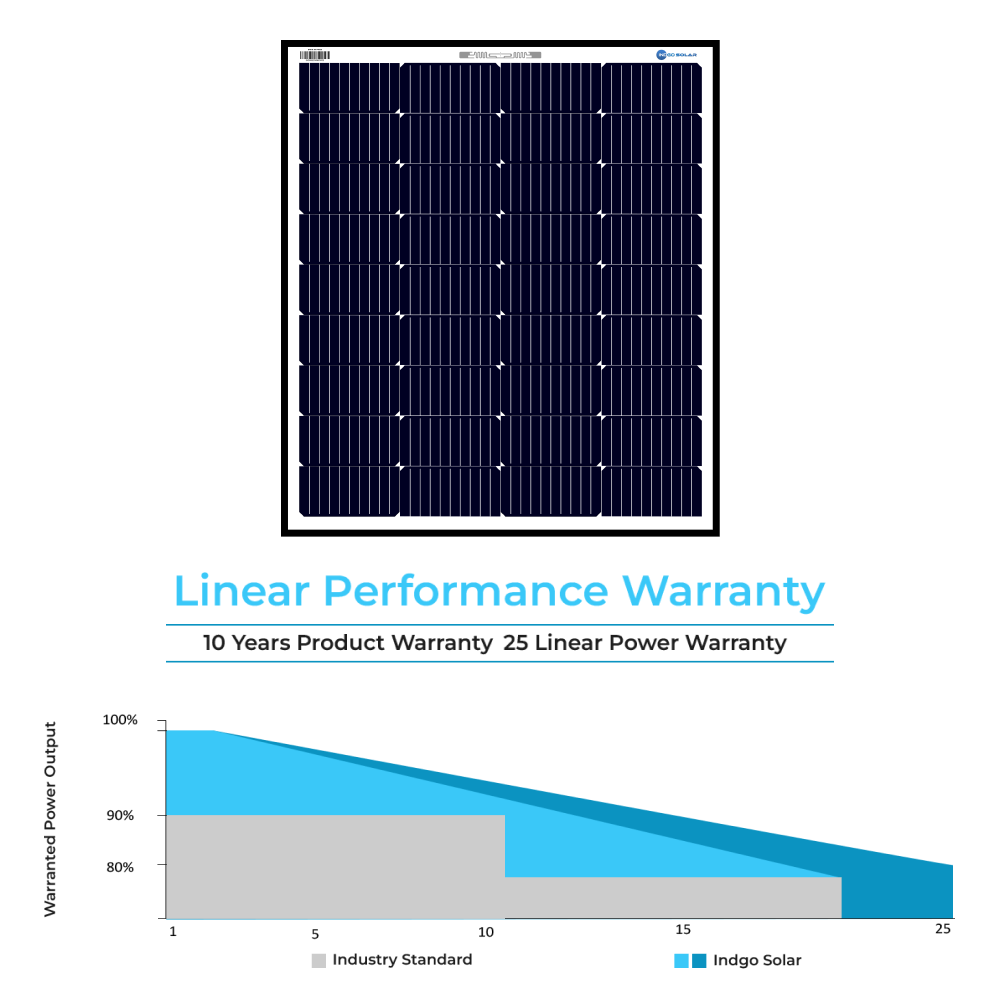
Distributor :
A distributor acts as a wholesaler but usually takes a more active role. A distributor is a person who manages dealers in a particular area. He buys products in bulk from a manufacturer like Indgo Solar and distributes them directly to consumers or to dealers who then sell to consumers. A distributor is a key component of the supply chain model used by both manufacturers and retailers because it allows a company to specialize or focus on its primary strengths of producing products or selling them to consumers. Distributors can provide a variety of services in addition to the purchase process, contract negotiations, and warranties for retailers.




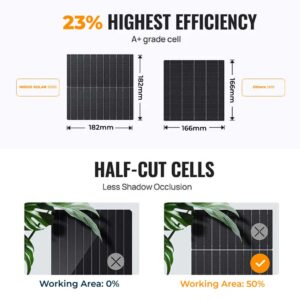
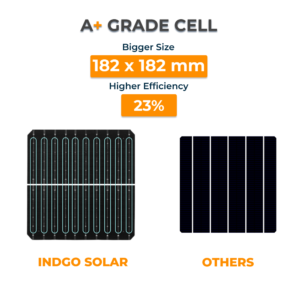
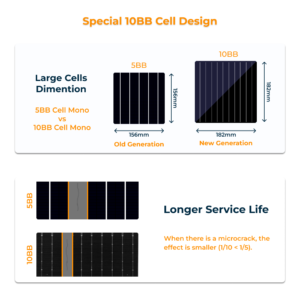
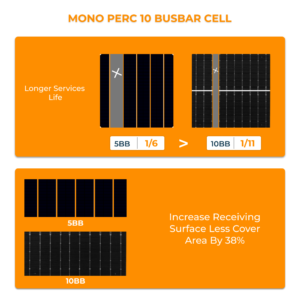
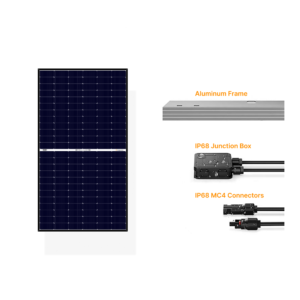
Reviews
There are no reviews yet.